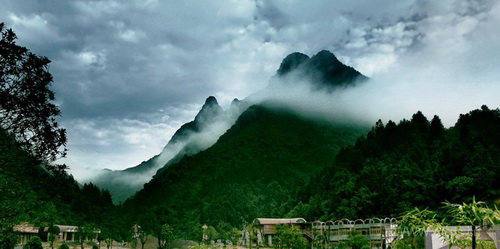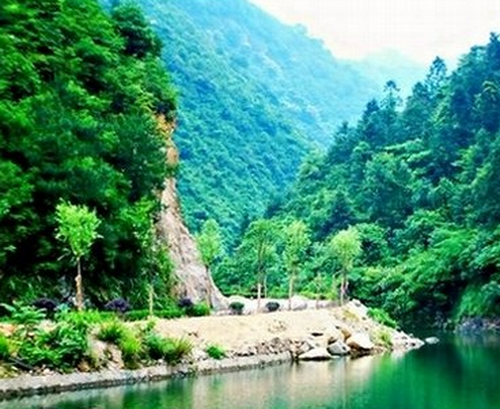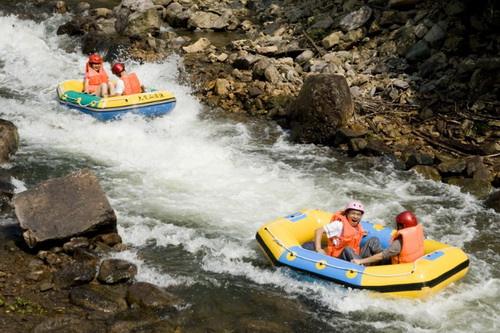Lofty Lushan Mountain
Temples in Hidden Places
On the First of August
Wheels by the Water
Share your travel story with regional@chinadaily.com.cn
Dajue Mountain
( chinadaily.com.cn )
Updated: 2011-09-21
 |
| Dajue Mountain |
|
|
Dajue mountain has a subtropical humid monsoon climate. It is neither severely cold in winter nor hot in summer. It is not beset by extreme natural calamities like typhoons, earthquakes or mud avalanches. The mountain enjoys sufficient sunshine, averaging 1,596.7 hours in a year. The climate is mild, averaging 16.9 C annually. The frost-free season lasts 270 days every year. It has an abundant of rainfall, averaging 1,929.9 mm in a year. The peaks above 800 meters in altitude account for 19.2 percent of the scenic region.
 |
| Dajue Mountain is a natural oxygen bar. |
The main peak stands at 1,360 meters above sea level. The scenic spot contains rich resources including arbors, shrubs, vines, flowers, plants, mosses, fowls and beasts. Incomplete statistics show the scenic spot is home to 123 rare and endangered species, including Taxus chinensis and gingko. It has 206 species of animals including clouded leopard and black bear under first-grade and second-grade state protection.
Dajue Temple, with a history of 1,600 years, is a key view spot of Dajue Mountain. The world famous temple is located inside the scenic spot, six kilometers away from the main entrance. The temple’s core region covers 120 hectares land. The temple integrates the sects of Buddhism, Taoism and Confucianism. The main part of the temple is positioned in a natural rock cavern of Lotus Mountain, 1,118 meters above sea level. The rock cave is 12 meters deep, 60 meters wide and 6 meters high.
 |
| Drifting at Dajue Mountain |





 Admission ticket price:
Admission ticket price: Drifting ticket price:
Drifting ticket price:  Cable-car ticket price:
Cable-car ticket price:  Opening time:
Opening time: Tel:
Tel:  Website:
Website: